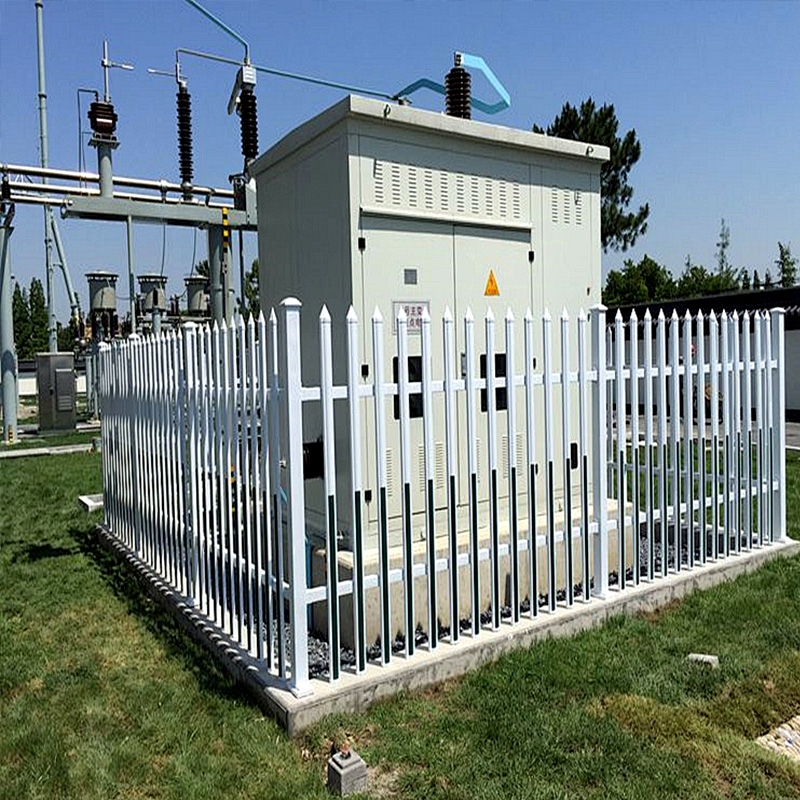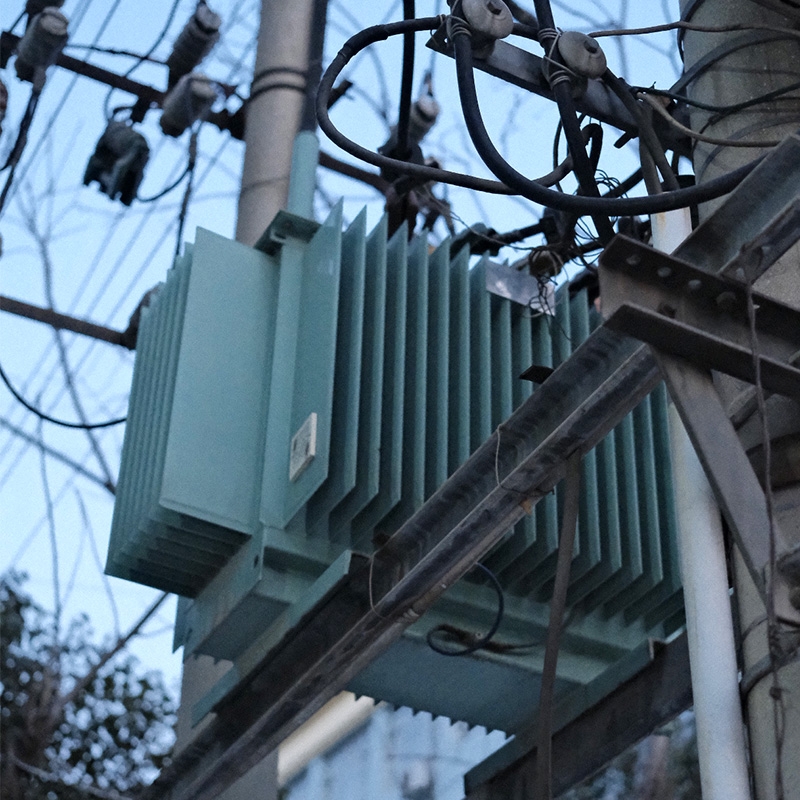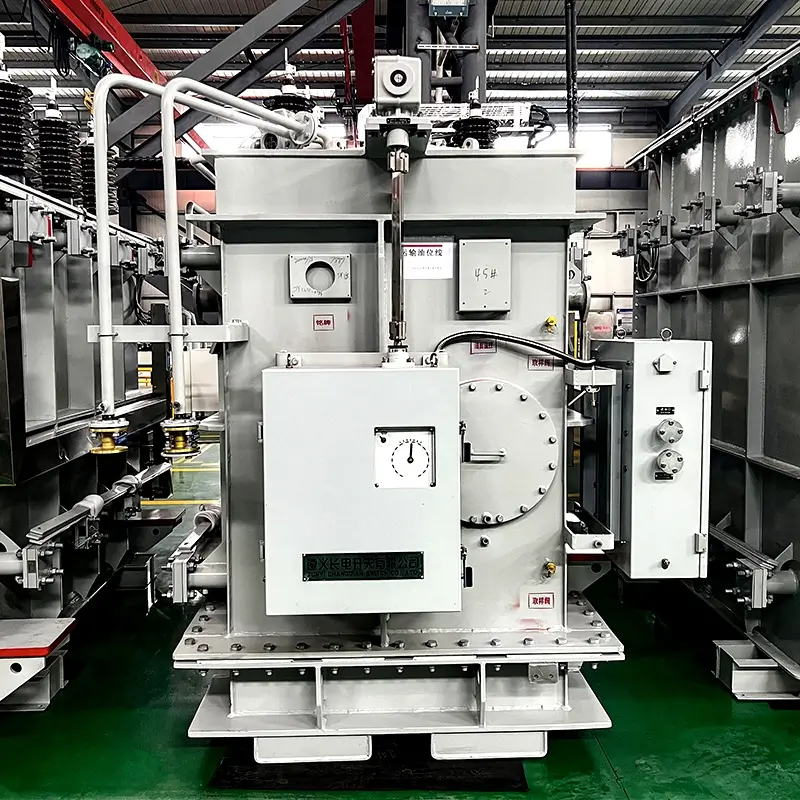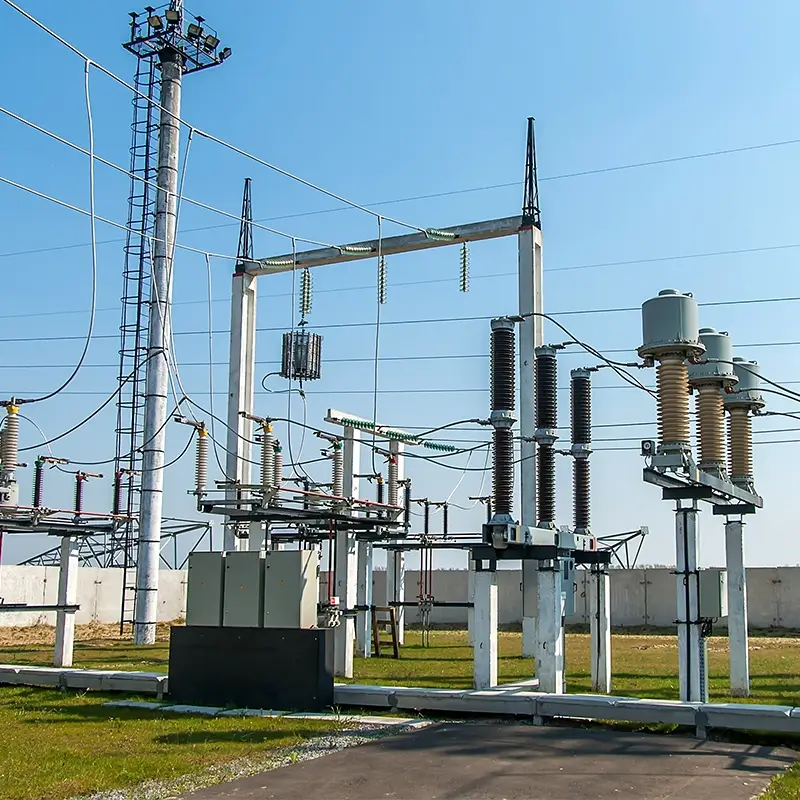Method of reducing transformer (no-load, load, stray) loss
The loss of power transformer mainly includes no-load loss and load loss, among which the load loss also includes stray loss.
No-load loss of power transformer
The no-load loss of the transformer mainly includes the hysteresis loss of the core material, eddy current loss and additional loss, and because the no-load loss of the transformer belongs to the excitation loss, it has nothing to do with the load.
1) Hysteresis loss is the loss caused by hysteresis phenomenon in the process of repeated magnetization of ferromagnetic materials. The size of the hysteresis loss is proportional to the area of the hysteresis loop. 2) Eddy current loss. Because the core itself is a metal conductor, the electromotive force generated by the electromagnetic induction phenomenon will produce a circulation in the core, that is, eddy currents. Due to the eddy current flowing through the core and the resistance of the core itself, the eddy current loss is caused.
3) Additional iron loss. The additional iron loss is not entirely determined by the transformer material itself, but mainly related to the structure and production process of the transformer. The main causes of additional iron loss are: there are high order harmonic components in the flux waveform, which will cause additional eddy current loss; Increased loss due to the deterioration of magnetic properties caused by machining; The local loss increases in the core joints and the T-zone between the core post and the yoke.
The main method to reduce no-load loss
Because no-load loss is an important parameter of the transformer, accounting for only 20% to 30% of the total transformer loss, to reduce no-load loss, it is necessary to reduce the total core, unit loss and process coefficient. The main ways to reduce no-load loss are as follows:
(1) Adopt high permeability silicon steel sheet and amorphous alloy sheet. Ordinary silicon steel sheet thickness 0.3 ~ 0.35mm, low loss, available 0.15 ~ 0.27
mm. At the same time, if the step stacking is used, the iron loss can be reduced by about 8%. Laser irradiation, mechanical indentation and plasma treatment can reduce the loss of high permeability silicon steel sheet. The eddy current loss of amorphous alloy sheet and silicon steel sheet with silicon content of 6.5% made according to the principle of rapid cooling is smaller than that of general high permeability silicon steel sheet.
(2) Reduce the process coefficient. Process loss coefficient is related to many factors such as silicon steel sheet material, annealing of punching and shearing equipment, clamping degree and so on. The cutting tool accuracy, reasonable tool loading and adjustment of the shearing equipment are also very important. (3) Improve the core structure. The core is not punched, the glass adhesive tape is not bound, the end face is coated with curing paint, and the interphase yoke is bound with high-strength steel tape. Non-magnetic steel plates are used to connect the upper and lower clips on both sides of the core column. The filling coefficient and cooling performance can be improved without painting for large capacity core pieces. The two yoke of the core are made into a solid, flat and vertically accurate whole by using the pressing tool and viscose. Reducing the width of the core lap can reduce the loss, and the no-load loss will be reduced by 0.3% for every 1% reduction in the lap area. The core mixed with different grades of silicon steel will consume energy, so it should be less or not mixed.
(4) Reduce the size of the core window. Change the winding constant turn insulation (thickness) to variable turn insulation, such as a 120,000/110 transformer according to the impact voltage distribution, the first end of the high voltage winding and the turn insulation thickness of the regulator section is 1.35m, and the other sections are 0.95
mm, the result is that after reducing the window size, the iron weight is reduced by 1.67%. Under the premise of safety, the reasonable reduction of the distance between the high and low main air passage, the reduction of the oil passage between the cake, the reduction of the distance between the phases, the strengthening of insulation treatment (adding Angle rings, partitions, etc.), the winding adopts the half-oil passage structure, which shorens the center distance of the core column, reduces the core weight, and also reduces the iron loss.
(5) Design a non-resonant core. The resonance frequency of the core is designed in the appropriate frequency segment, so that it can not produce strong resonance, and has an obvious effect on reducing noise, so that the energy used for noise reduction can be saved.
(6) Coil core transformer and three-dimensional core transformer. The coil core has 4 fewer sharp angles than the traditional laminated core, and the continuous winding makes full use of the orientation of the silicon steel sheet and adopts the annealing process to reduce the additional loss. For R type coil core, the section duty coefficient is close to 100%. The yoke of the three-dimensional core is arranged in triangular shape, which is 25% lighter than that of the flat coil core. These factors indicate that coil and solid cores are more energy efficient.
Load loss of power transformer
When the power transformer is running, the current passes through the winding, and the load loss will occur. Load loss, also known as copper loss, in addition to the DC loss of the basic winding, there are additional losses.
1) Basic copper loss. For a small-capacity transformer, the load loss mainly refers to the basic copper loss, and the additional loss caused by the leakage magnetic field is very small.
2) Additional loss. There are three kinds of additional losses: winding eddy current loss, circulation loss and stray loss:
(a) winding eddy current loss. When a large capacity transformer is running, the ampere-turns of the winding will produce a large leakage magnetic field. The so-called leakage magnetic field means that a part of the magnetic flux passes through the air, and a part of the magnetic circuit is an iron core. Because the wire of the winding is in the leakage field, the leakage flux will cause eddy current loss in the wire.
(b) Lead loss. Lead loss is the sum of the resistance loss of each lead of the transformer.
(c) Stray loss. Stray loss is the loss caused by leakage flux passing through steel structural parts (such as plate clamp, steel platen, press bolt and tank wall, etc.). The main way to reduce load loss
Load loss accounts for 70% to 80% of the total loss, including winding DC resistance loss (basic loss), vortex loss in the wire, and wind between the wire circulation loss, lead loss and structural parts (such as cleats, steel platen, box wall, bolts, core pull plate, etc.) stray loss. There are several main ways to reduce the load loss:
(1) Limit the additional loss caused by magnetic leakage. Calculate the ampere-turns balance and adjust the ampere-turns according to the result. The winding adopts "low-high-low" or "high-low-high" arrangement; Limit the width and thickness of the flat line; Select the most suitable transposition method according to magnetic field calculation; Transposition wires or combined wires are used.
(2) Reduce the size of the main and longitudinal insulation structures. The technology of "equal impulse voltage gradient" distribution on the high voltage winding can reduce the size of the longitudinal insulation. Thin paper tube and small oil gap are adopted between windings. Use corrugated paper as the main insulation; The shape of the forming part is exactly the same as that of the equipotential, the shape of the corner ring is consistent with the shape of the equipotential line, and the split corner ring is used as the structural part. The inner diameter of the winding is wound on the insulating paper, but an axial oil passage is arranged in the middle of the line segment; More acetal enamoured wire is used, QQ-2 or QQB type acetal wire is used instead of 0.45mm thick paper wrapped flat wire, because the first two turn insulation is 2× (0.056 ~ 0.079) mm, the winding filling coefficient is high, and meet the turn insulation requirements; Because there is no oil passage between cakes, the cooling mainly depends on the axial vertical oil passage, good heat dissipation, good filling coefficient and impact characteristics, uniform ampere-turns, small short-circuit force; Appropriately reduce the distance of main insulation (diameter, end).
(3) The relevant process is adopted according to the calculation. According to the impact calculation, the longitudinal insulation structure is determined, and the chamfer of the pad, brace and metal parts is kept in good shape. Calculation of leakage magnetic field and eddy current distribution guide the transposition mode; The winding is uniformly distributed in axial direction, and the core column binding is made of non-magnetic materials; The core column and the yoke iron part are provided with special shielding to mitigate the electric field; The voltage regulating winding adopts one layer and one tap; The process is assembled, the inner winding is directly wound on the insulation cylinder, the height and diameter tolerance are strictly controlled, the set gap is small, the hot sleeve new technology is adopted, the whole pallet and pressure plate are adopted, the winding is changed with Dinason paper, with pressure drying, the winding is placed in the thermal insulation oven to prevent moisture.
(4) Use low loss and low resistance wires. The oxygen-free copper wire is drawn from the top drawing, such as the copper continuous extruder. If it can be used in transformer, it can save energy and reduce volume, and has a certain application prospect. (5) The use of insulation structure characteristics to design can reduce the volume. Using the characteristics of transformer oil liquid dielectric, the covering layer, barrier, shield and insulation layer are set appropriately; Using the "distance effect" of oil to add a separator to form a small oil gap; Using the "volume effect" of oil using corrugated paper; Using the "thickness effect" of the insulation layer in the oil to add insulation to improve the breakdown voltage, but not too thick; The separator is set by using the distance between the separator and the maximum field strength pole. (6) Advanced insulation structure. The new spiral (or continuous) winding with axial oil passage is adopted to improve the filling coefficient, and the winding volume is effectively reduced. The compression structure of non-metal or non-magnetic materials is used in the magnetic flux leakage concentration, and the electromagnetic shielding is used to channel the magnetic flux leakage, which can reduce the load loss by 3% ~ 8%.
(7) Optimize the internal protection of the winding. The internal protection measures of the winding are capacitor ring, static wire turns, series compensation (additional pie capacitance), equal potential screen, and can also use tangled winding or internal shield winding. They both reduce the overvoltage applied to the main and longitudinal insulation under shock action, thus reducing the volume and energy consumption of the transformer.
(8) Use oblong equal winding and Yyn0 connection and reduce the height of energy saving. In practice, the use of oblong core, winding or oval winding or rectangular winding with rounded corners is more energy efficient than the circular traditional section. The use of Yyn0 than Dyn11 connector low voltage, three can share a disc tap-changer, simple structure, small size, the former than the latter 500kVA transformer, wire weight reduced 2%, iron weight reduced 6%, oil weight reduced 11%, so saving materials and energy. For the dry transformer, the higher the winding, the more obvious the temperature difference between the upper and lower, and the appropriate reduction is conducive to heat dissipation and energy saving.
The main method to reduce stray loss
Stray loss is a special case of load loss, so the methods to reduce it are discussed separately. The stray loss includes the loss of structural parts (core clips, shielding rings, etc.); Loss through the conductor (casing seat); Loss of parallel conductors (leads through high currents) and tank losses. There are several main ways to reduce stray loss:
(1) According to magnetic analysis and physical measurement, the use of core clamp miniaturization, the cancellation of the single-phase center column core plate, the increase of the core surface part of the gap, the use of low magnetic or non-magnetic materials for the core pull plate and the structural parts in the leakage field (such as bolts, etc.) can reduce the stray loss of the internal structure.
(2) For the casing outlet box and part of the box cover, carefully configure the lead to control the magnetic field, using copper plate shielding or non-magnetic materials, casing cover made of aluminum. A silicon steel sheet press plate can also be arranged between the winding and the clamp to absorb the magnetic flux at the clamp, oil tank, etc. A strip of non-ferrous metal is embedded where the magnetic field is strongest, which can reduce the stray loss of the high-current bushing and lead parts.
(3) For large transformers, the silicon steel plate with high permeability built along the box wall is used as a magnetic shunt to absorb the box wall magnetic shield; Or use non-ferrous metals with high electrical conductivity copper and aluminum as lining to produce eddy current reaction to reduce magnetic leakage into the tank wall, called electrical shielding. Generally, magnetic shielding is better than electrical shielding, which can reduce the stray loss of the fuel tank.
(4) Quantitative calculation of the oil flow loop, the use of baffles, reasonable separation of windings, to achieve uniform cooling, preferably corrugated oil tank, chip radiator, cooler, energy-saving fan, oil pump, to obtain the most economical and energy-saving cooling method, in order to reduce stray loss.
(5) Glass fiber reinforced plastic fan, high efficiency and low noise. Replacing the old type of cooler with a new type of cooler and using a variable frequency voltage regulating power supply for the cooler can reduce the loss of auxiliary equipment.
Summary: In summary, this paper mainly analyzes the causes of no-load loss and load loss of power transformer, and puts forward detailed treatment methods on how to reduce no-load loss and load loss of power transformer. These methods can effectively reduce the problem of large power transformer loss. Due to the complex problems encountered in practical engineering applications, there are still many. Therefore, the problem of how to reduce the loss of power transformers still needs further in-depth research.




